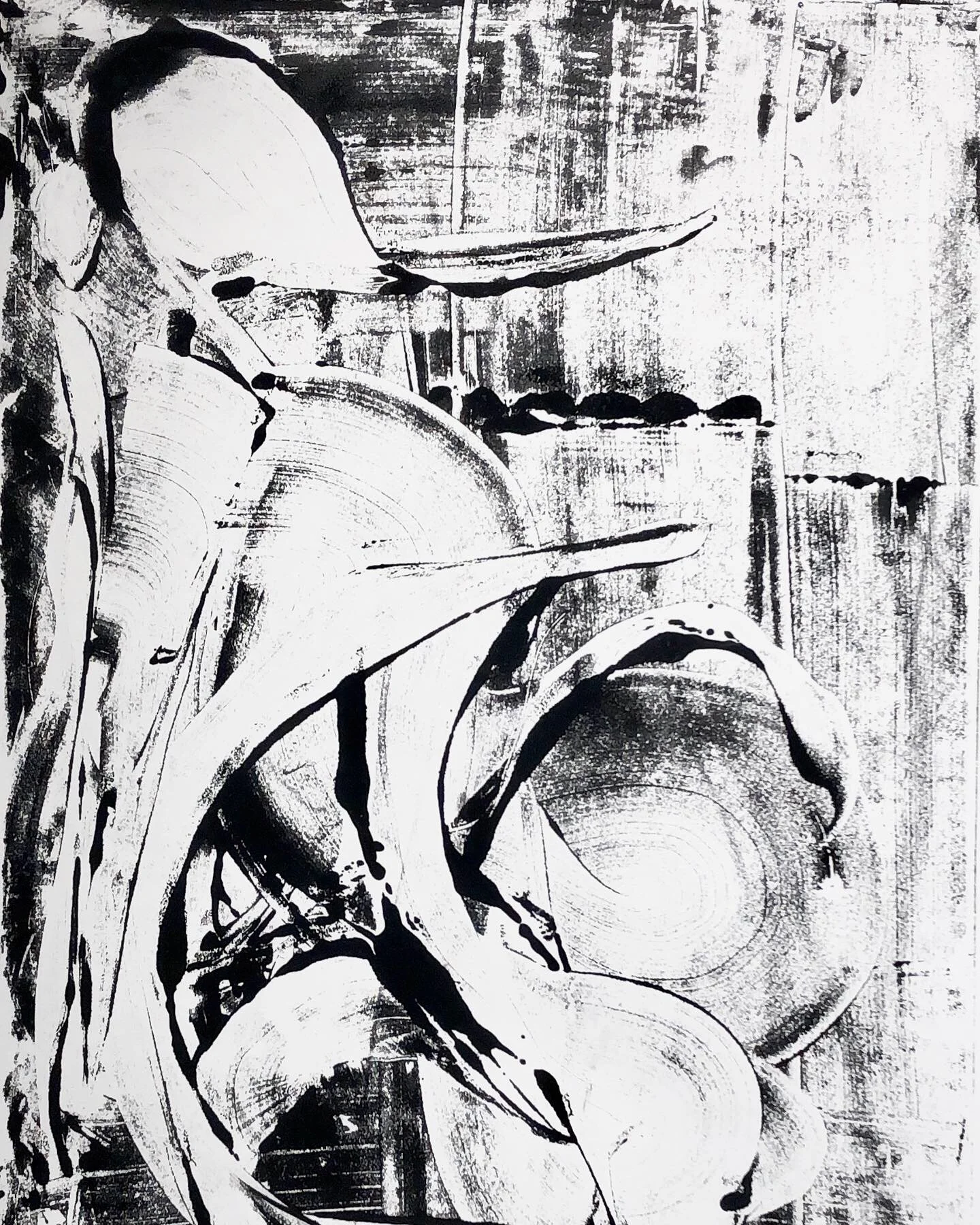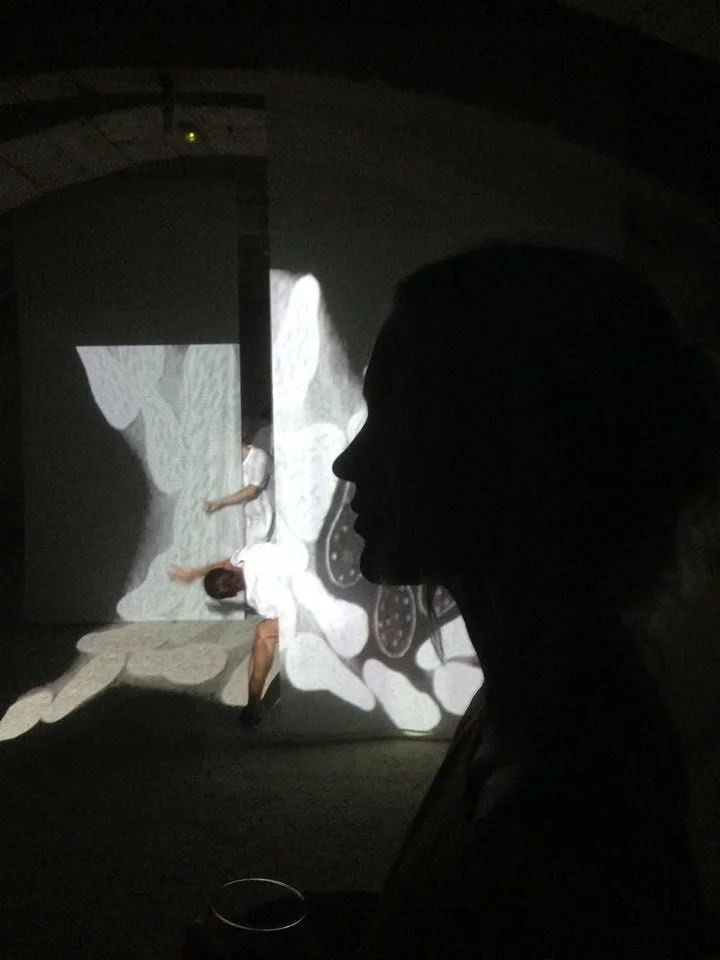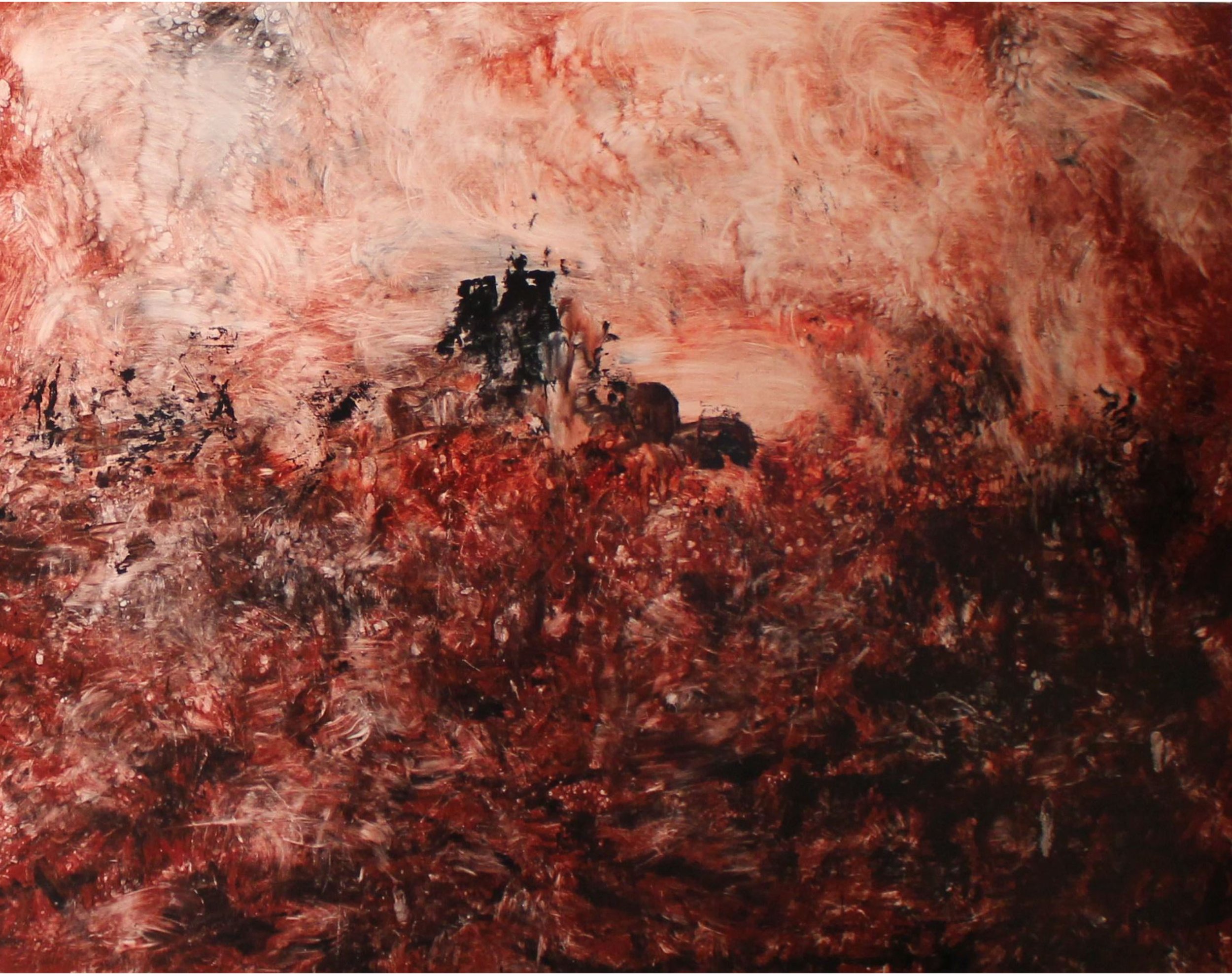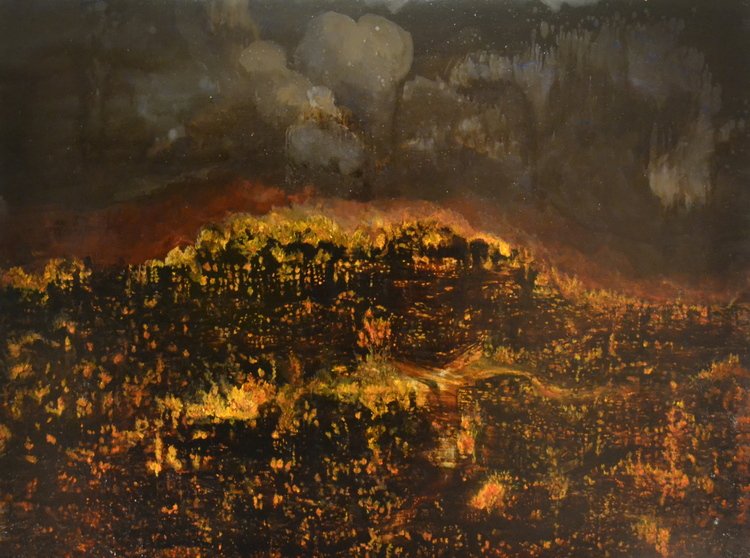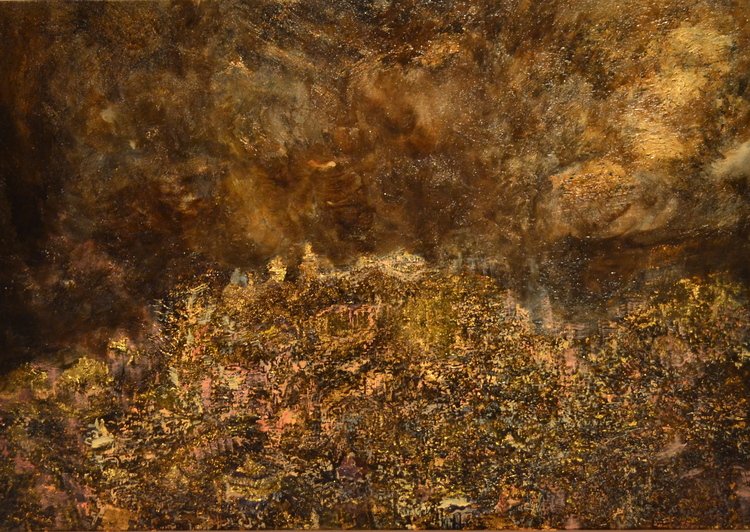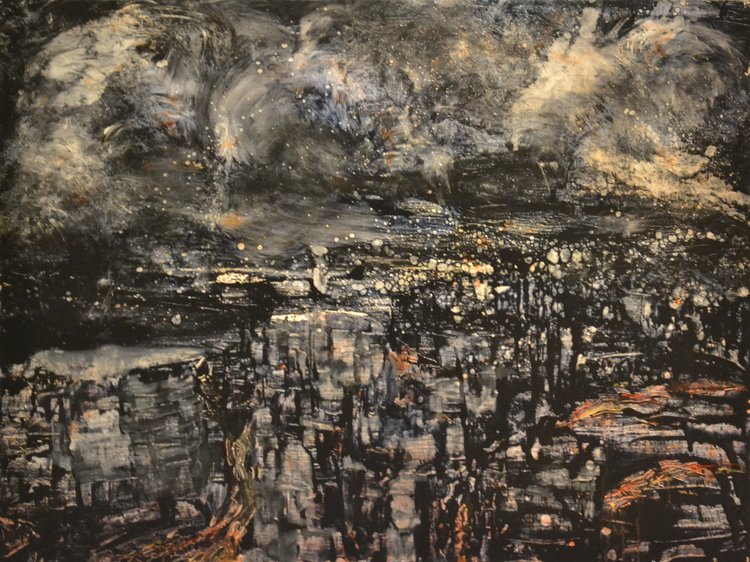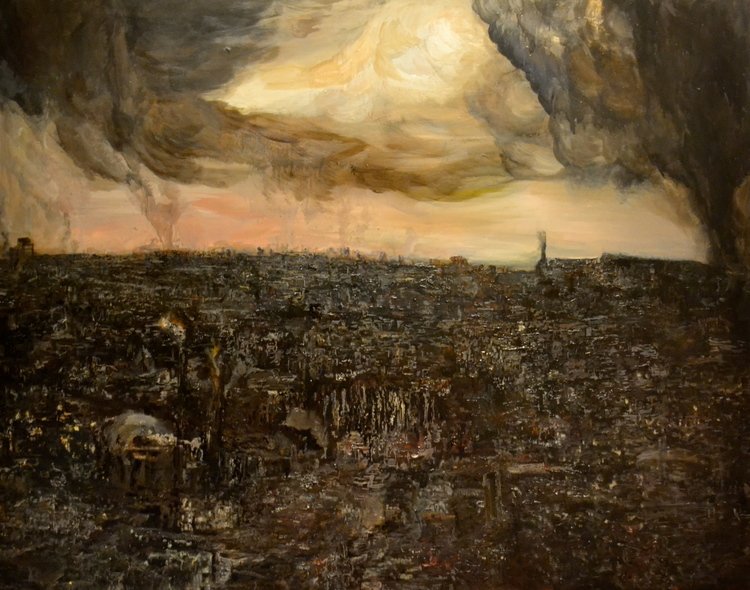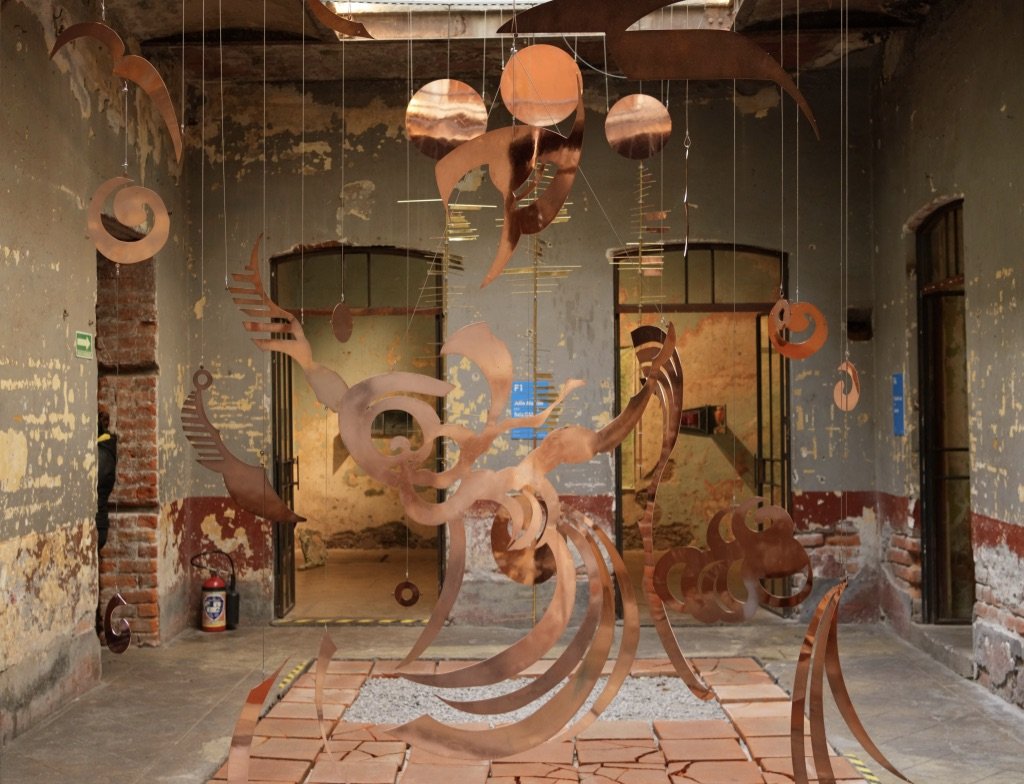
SALON ACME NO. 12 2025
Madeleine Fenwick ACME Salon No. 12 Public Projects
Spin, rotate. Natural cycles. On one side, vertical axes supporting horizontal movements. A hand connects to the sky, a foot connects to the ground: spiral transitions1. On the other, hand-drawn vectors of irregular organic copper segments, floating. A mobile, the tradition of kinetic art, a threshold. If the encounter happens, we enter the rotating rhythm of organic forms. One turn after another and another that in their rotation open a cyclical time: repetitions that in their iteration produce a composition.
“Composition itself is articulation: putting elements that cross and traverse each other in multiple directions. This crossing is charged with meaning in the course of the journey between, a bit like one is charged with static electricity, by rubbing in this gap between different materials, different dynamics; differentiation of potentials,” writes philosopher and choreographer Marie Bardet.
Bardet’s quote resonates closely with Fenwick’s work, since the artist is not only interested in sculptural production, in the totem that functions as a sign, but in the crossings that foster sculptural composition: the movement between human and non-human materials. An articulation of elements, which without losing its artistic character, overflows it to set in motion a rhythm with those who are present. Each correspondence is made possible by the artist’s attention to both her materials and their interaction: the spiral movement.
Cause and effect exchange segments. Parts 1), 2), 3) invites the gaze to abandon its central position to consider the eye as an organ that dances to the rhythm of the sculpture. Vision loses focus: the demand for clarity becomes a meditation hosted by the energy shared between the sculptural body and whoever accompanies it in its transit. In The whirling Dervish the scale changes, the skin of the eye integrates with the whole body to invite it to enter a small room of circular rhythms. This choreography is possible thanks to the 20 pieces of aluminum that compose it, which are covered with polished copper – laser cut using electrolysis.
The weight of this materiality plays with gravity to open a movement that starts from a long-term investigation into the dance-meditation carried out by the Dervish order, whose origin dates back to the practices of the Sufi poet Yalal al-Din Muhammad Rumi, in the 13th century, in what is now Turkey. Bodies spinning around themselves with arms outstretched. As the spin begins, the arms are crossed over themselves as they “open” over the chest, polishing the heart. This polishing is to remove the rust or cobwebs that have covered or darkened the heart. The arms are then brushed and let the rust fall to the ground, releasing those worries, cobwebs and debris. Then the arms are slowly raised together, the outer sides (not the palms) of the hands almost touching as the center is raised, by the heart and above the head. Then the hands open the curtain, and one spins inward and up and the other outward and down, the dervish opens the curtain between worlds: this one and the next or the seen and unseen world. The visual power of the sculpture is actualized in the articulation between matter and movement, which takes care of an intimacy “without distance or identification, of those two times that are no longer separate: sensation and composition” (Marie Bardet).
Although sculpture has always been thought of in relation to bodies, in Fenwick's work the position of the spectator is not passive (receiving sensible amounts or information), but active: the possibility of going through a small, unique dance, either with the gaze or with the entire body. The choreographic nature of the proposal is based both on previous collaborations that the artist has carried out – among them the residency with the National Dance Company of Malta, ZFIN with the choreographer Rosemary Lee (2020) – and on a proprioceptive interest in the forces, not always visible, that sustain movement. Paradoxical states of matter, chain reactions caused by a decisive moment. Light, particles, waves, vibrations. Space and air are not empty, but are filled with the potential of invisible meshes of rhythmic exchange that dance within a dynamic space.
Like all water molecules on Earth vibrate in a state of constant flux from the ocean to the rain and ice. Another important element is fire: let it flicker, knowing the wind. Fenwick's work, as part of Public Projects at Salón ACME No. 12, invites a change of pace, a space to turn attention to our body, its rotations, and its ability to share itself with other materialities. Let us be carried away by it. Let us dance.
Sandra Sánchez












